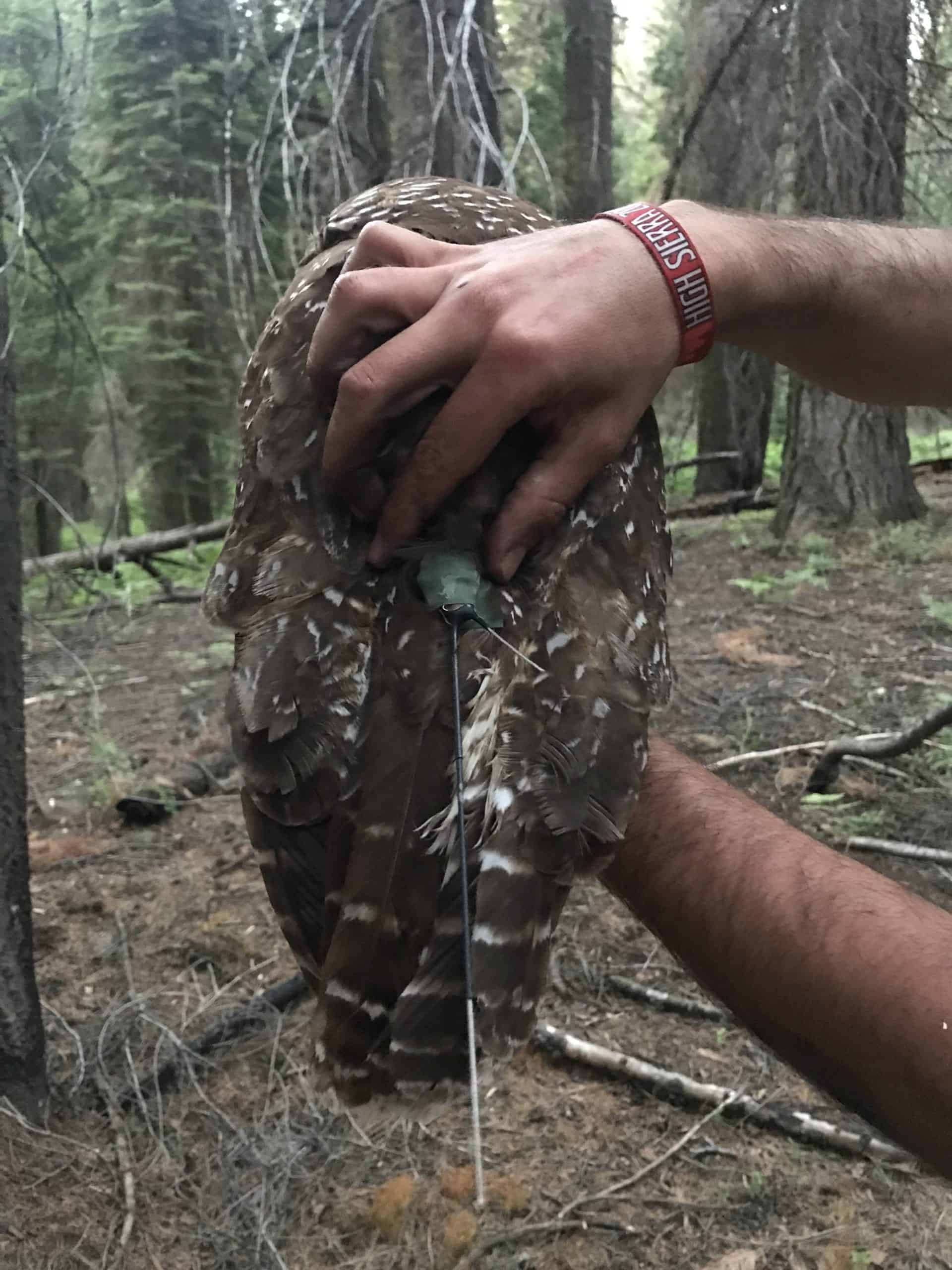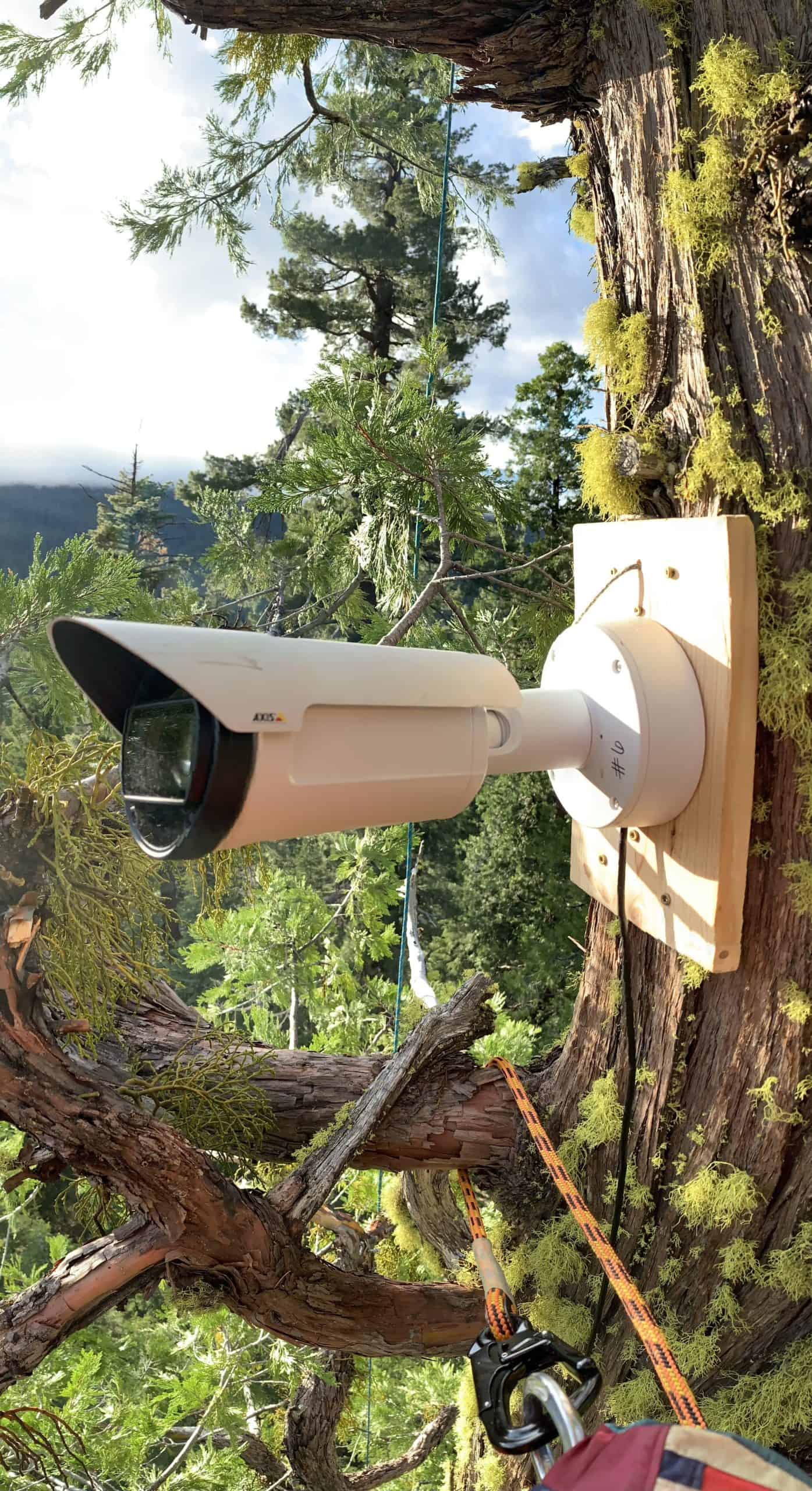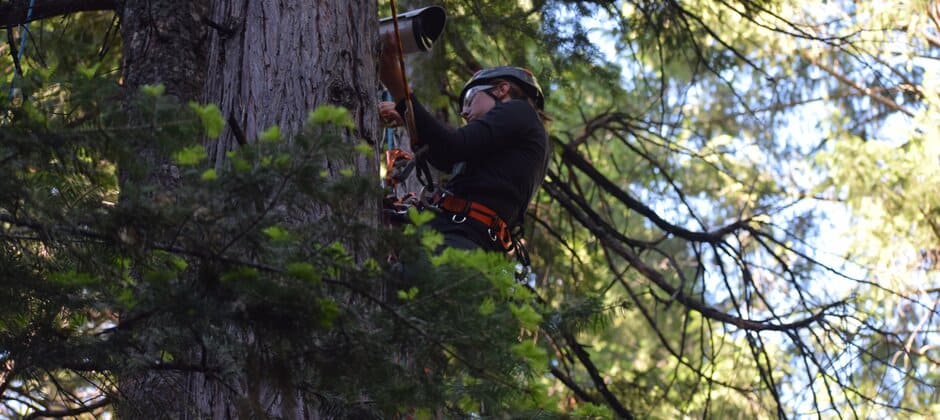Share this article
Wild Cam: Spy gear reveals spotted owl habits
Climbing trees to spy on owls, researchers are gaining some insight into the birds’ nocturnal lives.
California spotted owls (Strix occidentalis occidentalis) have been declining by about 2% per year, according to previous research. As their populations drop, and the spotted owl subspecies faces threats of invasive barred owls (Strix varia) moving into their territory from the north, researchers have called for protection of the California spotted owl. The larger barred owls are already outcompeting the northern spotted owl (Strix occidentalis caurina), another subspecies, and researchers are concerned the same thing will happen to the California subspecies.
But it’s difficult to tell what these owls need to survive, due to their fly-by-night lifestyle and feeding habits. As a result, forestry and wildlife ecology researchers at the University of Wisconsin-Madison are harnessing new technology to better understand the owls’ natural habitats. They published their findings in a study recently in the Wildlife Society Bulletin.
“Spotted owls are these nocturnal and cryptic predators,” said Dana Reid, a master’s student at the university.
Enlarge

Credit: Ceeanna Zulla
She and Ceeanna Zulla, another master’s student at the University of Wisconsin Madison, linked up with collaborators working on a larger project to trap owls and place GPS tracking devices on the birds.
Enlarge

Credit: Ceeanna Zulla
Zulla was trying to find out the types of food that the owls rely on. But to do so, she had to spy on the owls’ proverbial dinner tables. Using rock climbing skills that she hones as a hobby, Zulla shot ropes over high branches using a slingshot device, then climbed the tall trees. She placed classic surveillance cameras — the type used in parking garages and gas stations that work well in the darkness — on the nests of 15 California spotted owls found using the GPS tracking devices.
In the past, Zulla said that researchers had only inferred what the owls ate based on pellet analysis. But thanks to the cameras, “we’re able to see exactly what prey they’re bringing to their nest,” she said.
The GPS devices are also revealing exactly where the owls gather the food from. This information will be critical in defining important habitat for the spotted owls — a controversial topic since logging companies and conservationists have had some dispute in the past on whether owls make use of burned forest areas for foraging, or whether these areas can be salvage logged.
Their findings are already revealing that the owls, such as the juvenile above, eat plenty of wood rats (Neotoma Spp.), rodents that are often associated with younger forests and hardwood forests. The work is still preliminary, but they believe that young to old forest edges might be important for prey access for the California spotted owl.
But the researchers’ cameras also caught some rarer prey items, such as bats like the one the owl is delivering to its nest in the video above.
Meanwhile, Reid has been attaching recording devices to the tail feathers of owls they’ve captured and released to get a better idea of what their vocalizations mean.
Previously, researchers had to chase owls around at night, holding recording devices to capture sounds like the common trademark hoot above. Sometimes, they would fix the devices to trees where the owls may not spend that much time. Other work has only studied the noises captive birds make.
But these devices stay fixed to the birds’ tail feathers until they molt. Since the GPS is also fixed to the recording device, the researchers can find it on the forest floor if they don’t recapture the bird itself.
“The microphones allow us to collect really detailed information on spotted owl vocalizations,” Reid said. The recording above captures the sound of two owls communicating back and forth with each other.
Information on their vocalizations can be used to better count bird populations in a given area without actually capturing each owl. It can also teach researchers about why they hoot certain ways in certain contexts — such as the call above, a higher-pitched territorial call that female owls usually make.
This photo essay is part of an occasional series from The Wildlife Society featuring photos and video images of wildlife taken with camera traps and other equipment. Check out other entries in the series here. If you’re working on an interesting camera trap research project or one that has a series of good photos you’d like to share, email Joshua at jlearn@wildlife.org
This article features research that was published in a TWS peer-reviewed journal. Individual online access to all TWS journal articles is a benefit of membership. Join TWS now to read the latest in wildlife research.
Header Image: Ceeanna Zulla installs a trail camera in a tree near a northern spotted owl nest. Credit: Kate McGinn








